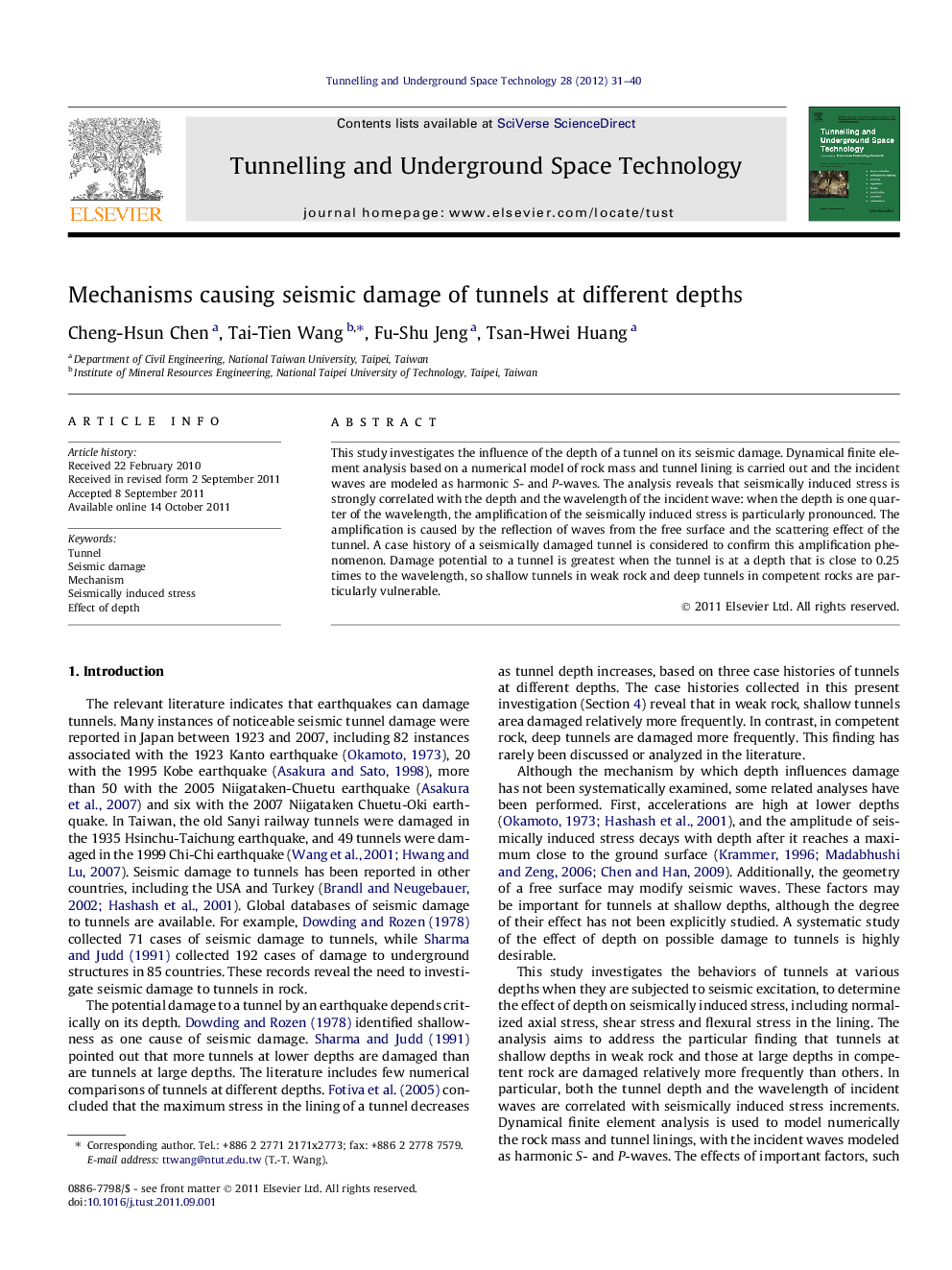| Article ID | Journal | Published Year | Pages | File Type |
|---|---|---|---|---|
| 312473 | Tunnelling and Underground Space Technology | 2012 | 10 Pages |
This study investigates the influence of the depth of a tunnel on its seismic damage. Dynamical finite element analysis based on a numerical model of rock mass and tunnel lining is carried out and the incident waves are modeled as harmonic S- and P-waves. The analysis reveals that seismically induced stress is strongly correlated with the depth and the wavelength of the incident wave: when the depth is one quarter of the wavelength, the amplification of the seismically induced stress is particularly pronounced. The amplification is caused by the reflection of waves from the free surface and the scattering effect of the tunnel. A case history of a seismically damaged tunnel is considered to confirm this amplification phenomenon. Damage potential to a tunnel is greatest when the tunnel is at a depth that is close to 0.25 times to the wavelength, so shallow tunnels in weak rock and deep tunnels in competent rocks are particularly vulnerable.
► We model the responses of tunnels at various depths when they are subjected to seismic excitation. ► Seismically induced stress in lining is strongly correlated with depth and incident wavelength. ► Stress amplification is particularly pronounced at a depth of 0.25 times wavelength. ► Stress amplification is caused by reflection of wave from free surface and tunnel scattering effect. ► Shallow tunnels in weak rock and deep tunnels in competent rocks are particularly vulnerable.
